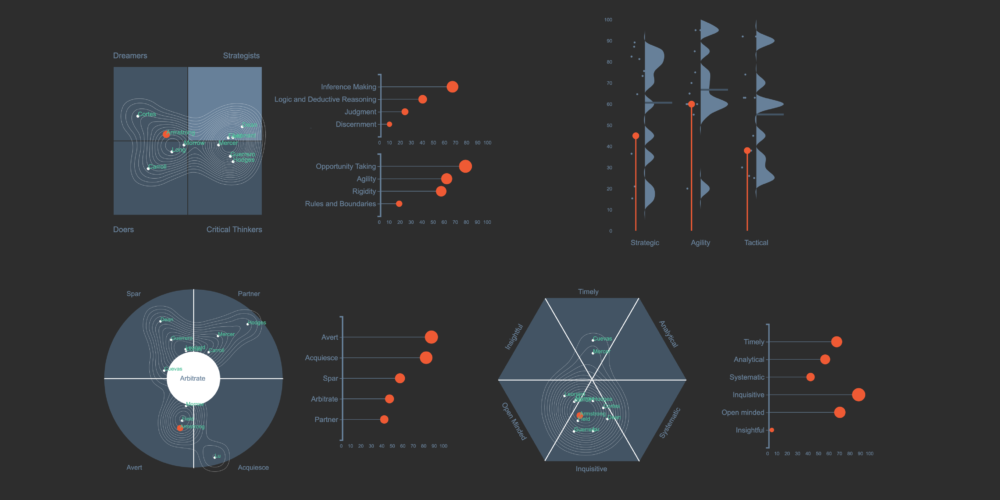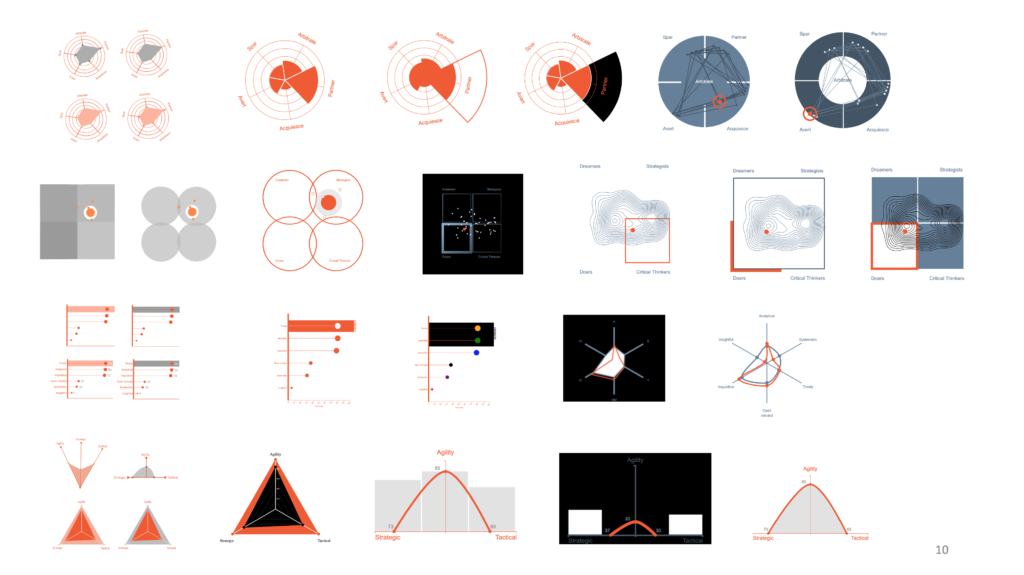
Mentoring program helps bring PCA&D’s new Data Visualization Certificate to life
Thursday, July 22nd, 2021
This is the story of mentorship, PCA&D community, and expanding the ways artists and designers can impact the world around them.
The culmination of all of those elements: a new certificate program, Data Visualization, that teaches students to use effective design principles and analytics for information design.
Seth Crider, a PCA&D alumnus and instructor for the Data Visualization certificate says that the “ability to dismantle traditional knowledge barriers and create conversations with audiences” is increasingly crucial.
Audiences, “in the age of social media, are no longer content with being passive. Interactivity, usability, and visual communication are here to stay – especially as it pertains to science, analytics, and storytelling.”
But to communicate all of that information clearly, to the widest possible audience, data visualization needs to be based in good design.
A mentorship with purpose
It starts with a Spring 2021 mentorship: the team of Seth Crider ’18 and Brittany Lare ’21. Crider works for the U.S. Navy in the field of data visualization — the process of turning information, numbers, and analytics into visual representations that can be more easily understood, and that illuminate patterns that can be helpful. It turns the not-so easily-pictured, visible. In Crider’s case, it also can create stunning artwork that uses pure creativity to turn data points into art that’s both ethereal and deeply rooted.
Lare, meanwhile used her senior thesis work of color-coded knitted “scarves” to visually track decades’ worth of temperature and climate changes.
Together, they worked to showcase how art and data can combine in a project for Psynet Group, a New York-based management consulting firm. They were charged with updating the way Psynet data sets interact with each other, and the speed at which the company can analyze results that determine a candidate’s suitability for specific jobs. Crider and Lare worked to design programs that create data-dense reports with immediate visual impact, and graphics that are easily adapted and understood when the input data is changed.
It was, Crider says, “a long process, but a very rich one.” The mentorship, was a learning experience for both: Crider expanded his collaborative and teaching experience, and Lare got to follow the process in the footsteps of someone whose already gained experience in the field.
“It was interesting,” Lare says, “to see a hidden art form behind each graphic. Seth walked me through his process — like, coding, programming — to keep me along for every step of this extensive project.” Because of Covid restrictions, she adds, “I couldn’t have a 2020 internship — so having this experience with Seth was incredible. I loved the process.”
Michael Molla, President of PCA&D, says that the benefit for current students is that a true mentorship leaves them with a much better idea of how a particular career path operates.
“That ‘back-of-house’ understanding is so important to have,” Molla notes. “Many times, as arts-oriented (institutions) we may not have focused on that question” of day-to-day business or logistical operations. “And you don’t want to leave graduates in the workplace going ‘huh?'” when they’re charged with tackling projects of their own.
For his part, Crider says, “It was refreshing to get out of ‘my space,'” and to challenge and stretch what he knew by helping to guide a student through the process.
“I had to learn how to communicate exactly what I do, so I could teach Brittany,” he says. “We’re in different areas of our professional careers, so she got to see the business end along with the creative end.”
‘We are a community’
This spring 2021 mentorship was the College’s first “intersection of an alum and a senior partnering in this powerful way,” Molla says. “It’s a new model of how we can engage (alumni) in that mentor/teacher role: There’s real documentation of learning here.”
And PCA&D, because of its microcollege size, is ideally suited for having deep knowledge of both graduates and current students, and building mentor/mentee relationships that benefit both parties.
Interested in more information about the Data Visualization Certificate? Visit here, or email Bonnie Kern, at bkern@pcad.edu.
When the Psynet opportunity arose, Molla and PCA&D Provost Dr. Carissa Massey already were deep into discussions about incorporating data visualization into the College curriculum. Justin Phillips, PCAD’s Director of Virtual Learning & Artmaking, was brought on board and immediately thought of Crider’s work as well as Lare’s senior thesis. He acted as a liaison to bring all the parties together, Phillips says. “I was excited to participate in this project and to be able to connect Seth and Brittany; it was a win-win opportunity for everyone involved.” Lare got practical experience; Crider explored teaching; and Psynet wound up with completely redesigned evaluation tools that make working with clients a process that requires less time and provides more pinpoint clarity. It was, participants agree, a unique mentor/student/company collaboration.
“The mentorship model really is PCA&D,” Crider says. Close relationships already are established simply by the classes operating, as well as the close student-to-teacher ratio of about 10:1. The existing emphasis on communication and critique also serves to strengthen that mentorship model.
“PCA&D already teaches you how to funnel all these disparate feedback (sources) and your strengths into something new,” Crider says. “Being an artist, taking critiques … funneling input, consulting with people who have other strengths … that’s PCA&D,” he says. “Very quickly, students learn to go to professionals, to their professors, and have the opportunity for their professors to reach out to them” for projects as well.
Getting to experience that mentorship model one-on-one, Lare adds, was the epitome of learning.
“Learning that backbone, like Seth’s 10 or 15 questions he asks at the beginning of every project — those are things I’ll take with me,” Lare says. “It helped me learn to be a better communicator and advocate for myself when taking on projects like this.”

Prototype data visualization developed by Seth Crider ’18 and Brittany Lare ’21, during their mentorship/partnership for Psynet Group in New York.
Data Visualization certificate
For Molla’s part, he envisions the College’s newest certificate program as ” an intersection between social design and data visualization — a place for people to solve problems” through good design.
The project just completed by Crider and Lare, he says, was a powerful way to test the idea of a data visualization certificate in an unofficial “pilot” program.
Now, he says, “it’s my job, and Provost Massey’s, to enable this new model of how we can engage that mentor/teacher role even more deeply.”
One part of that has been formalizing Crider’s role, bringing him back into the PCA&D fold to instruct in the College’s new Data Visualization Certificate program.
The certificate has three core courses: Foundations for Information Design, Data Analytics Methodologies, and Information Design Project Studio, in which students will build a large-scale, cumulative project. Beyond that core, three of four classes will be required: Data Manipulation and Documentation; Interactive Visualization; Information as Material, Form, and Installation; and/or Spatial Analysis and Map Making.
The career demand for those who can combine these skills with an art and design sensibility is robust, Phillips says. “Information Designers who create Data Visualizations can help solve problems and visually make sense of an increasingly complex world,” he says.
“These designers will be on staff in most sectors of industry in the coming years whether their work is being utilized in behind-the-scenes strategy and logistics or outward-facing messaging. Data Visualization is a skill set for today and the future.”
Crider agrees, adding that there is “a real need for individuals, and organizations to prioritize communicating information that is approachable and understood from many angles. Doing so not only strengthens the brands and institutions that place design at the forefront, but also bolsters clients to feel more empowered and engaged.
And that, he says, is what makes the Data Visualization certificate a valuable addition to PCA&D’s art and design curriculum.
The current and upcoming data visualization job market, Crider says, is “driven by technology and interdisciplinary artists … by becoming more familiar, and in tune with tools and methods to create stronger digital and physical experience, professionals become more valuable and marketable.”
Images: Data visualization work by Seth Crider ’18 and Brittany Lare ’21 for Psynet Group.


